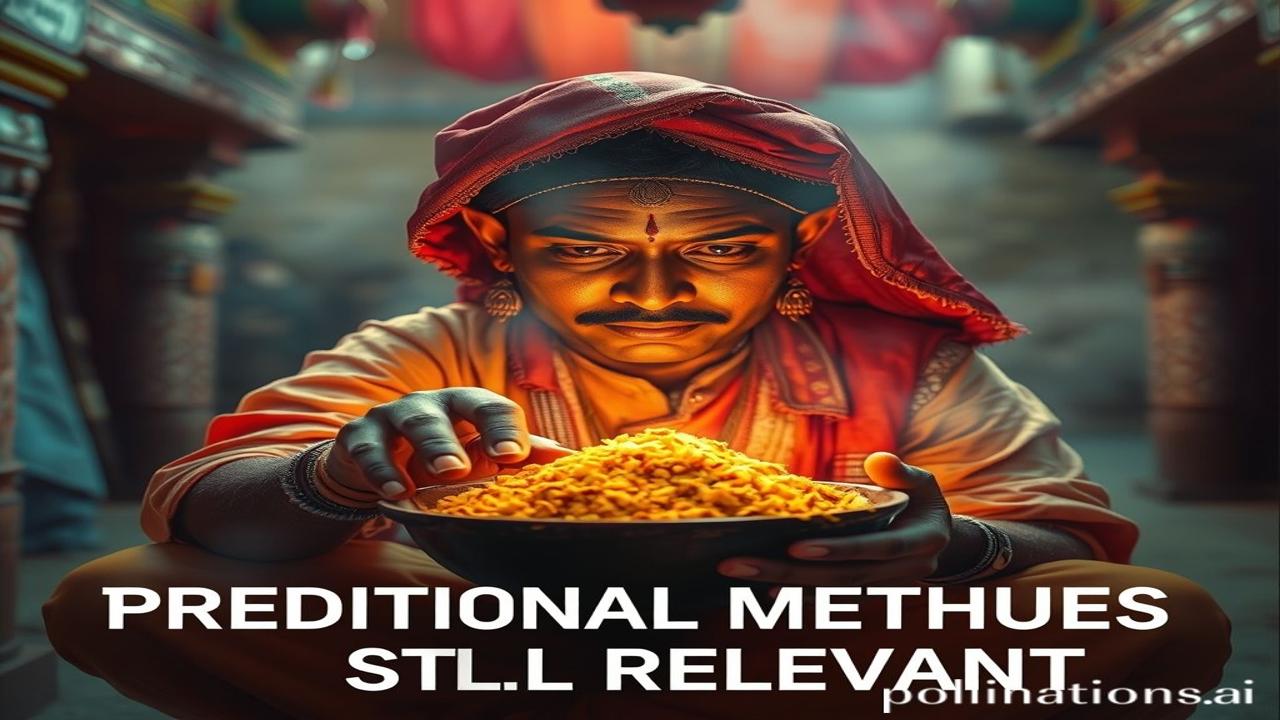Dadi Maa Ke Nuskhe: Why Traditional Preserving Methods Are Still Rocking!
Kabhi socha hai, jo aam ka achaar dadi maa banati thi, usme kya jaadu tha? It wasn’t just the recipe, yaar! It was the ancient wisdom, the timeless techniques, that kept the taste alive for months, even years! Let’s dive into this fascinating world of traditional preserving methods and see why they’re still relevant AF!
Itihasik Background: Preserving the Past, Preserving the Future
Traditional food preservation is not some fancy new trend; it’s a practice as old as civilization itself. Think back to the Indus Valley Civilization (around 3300-1300 BCE). People had to figure out how to store food for the long haul, especially during droughts and famines. Drying, salting, fermenting – these weren’t just random experiments; they were survival strategies!
Salt, a precious commodity, played a HUGE role. We’re talking centuries ago when salt wasn’t cheap or readily available like it is now. Consider this: The Roman army was sometimes paid in salt – hence the word “salary” (from “salarium,” Latin for salt money!). In India, salt was crucial for preserving fish, meat, and vegetables, ensuring people had sustenance throughout the year.
Fermentation, with its magical microbes, also held immense importance. Think about “idli-dosa,” “dhokla,” or even the simple “lassi.” These aren’t just delicious; they are naturally preserved and packed with good bacteria for your gut!
Why Was This Important?
Food security, baby! Aur kya? Imagine a world without refrigerators. These methods ensured that communities could survive lean seasons, trade surplus goods, and prevent spoilage. It also meant families had something to eat during unexpected events.
Zameeni Sach: Life, Love, and Preserving Food
Imagine, Ma Yashoda, centuries ago in Vrindavan. Summer is ending, and the mangoes are ripe and plentiful. But they won’t last forever. She calls the women of the village, and they gather around with large clay pots and vats.
“Aaj hum aam ka achaar banayenge!” she announces, her voice ringing with energy. “Sabse pehle, mangoes ko dho dho kar, kaato! Remember, the pieces need to be uniform. Sun lo, aur dhyaan se dekho, kal tumhari baari hai!”
The women laugh, chatter, and work together. Some are grinding spices like turmeric, mustard seeds, and chili. The air fills with the pungent aroma. Others are layering the mangoes with salt and spices, carefully packing them into the pots.
“Itna namak kyun?” asks a young girl, wrinkled her nose.
“Beta,” Ma Yashoda smiles, “Namak toh raksha karta hai. It protects the mangoes from spoiling and keeps the flavour alive.”
Days pass, and the jars sit under the sun, slowly transforming into delectable achaar. This wasn’t just about food; it was a community ritual, a way to pass down knowledge, and a celebration of abundance.
Dharohar Aur Pehchan: Bharatiyata in Every Bite
Today, even with our fancy refrigerators and supermarkets, these traditional methods still echo in our kitchens. Achaar, murabba, papad, badi – these are more than just food items; they’re a part of our culinary heritage, a taste of home, and a reminder of our ancestors.
They are deeply intertwined with “Bharatiyata.” The spirit of sustainability, resourcefulness, and community collaboration is embedded in these practices. Think about the countless families who still make their own ghee, yogurt, and pickles. They are not just preserving food; they are preserving tradition and passing it down to future generations.
Majedar Tathya Ya Bhram-Bhanjak: Myths Busted!
Myth: Traditional preserving methods are unhygienic.
Truth: While modern hygiene practices are important, these methods, when done correctly, naturally inhibit the growth of harmful bacteria. The use of salt, sugar, vinegar, and fermentation create environments where bad bacteria can’t thrive.
Fun Fact: Did you know that some fermented foods, like kimchi and sauerkraut, are considered superfoods due to their high probiotic content?
Drishya Aur Bhavnayein: A Sensory Symphony
Imagine the smell of spices wafting through the air as pickles are being made. Feel the coarse texture of sun-dried vegetables under your fingers. Hear the sizzle of mustard seeds as they temper in hot oil. See the vibrant colors of homemade jams glistening in glass jars. These are the sensory experiences that connect us to our past and enrich our present.
Antim Vichar Ya Uddharan: Wisdom to Savor
“अन्नं ब्रह्म रसो विष्णु:” (Annam Brahma Raso Vishnu) – Food is divine, and its essence is Vishnu. This ancient saying encapsulates the respect and reverence we hold for food in Indian culture. Traditional preserving methods are not just about storing food; they are about honoring its essence, preserving its goodness, and sharing its bounty with loved ones. So, next time you bite into that homemade achaar, remember the legacy, the wisdom, and the love that went into making it. It’s more than just food; it’s a piece of our history, preserved for generations to come.
